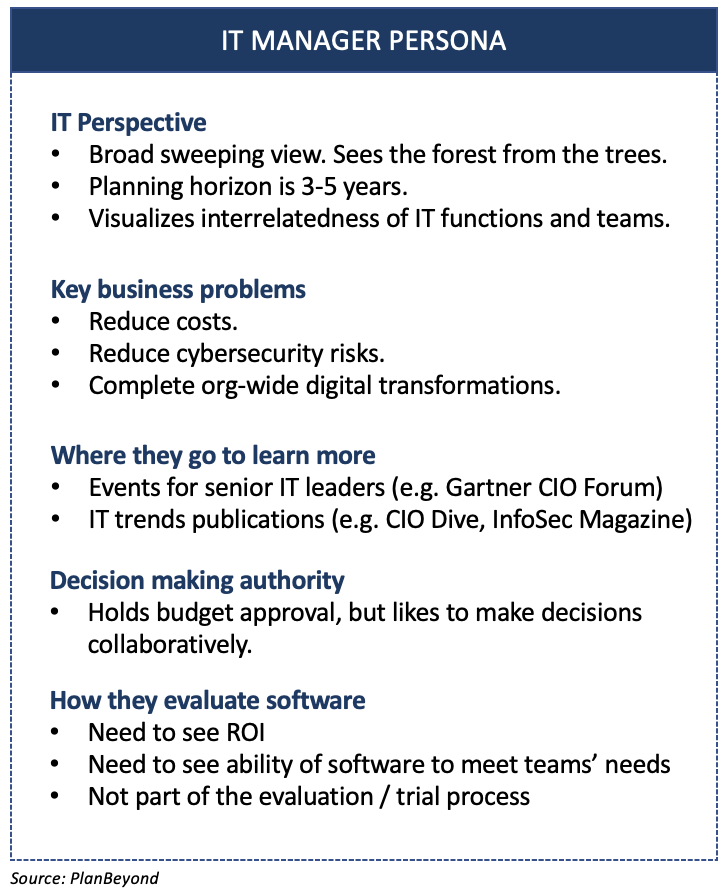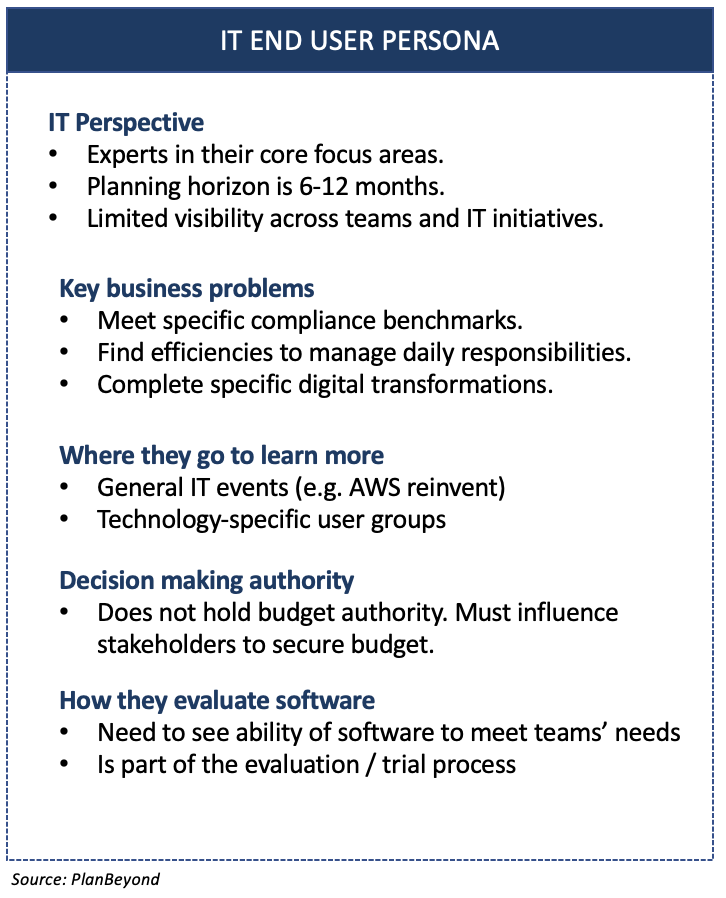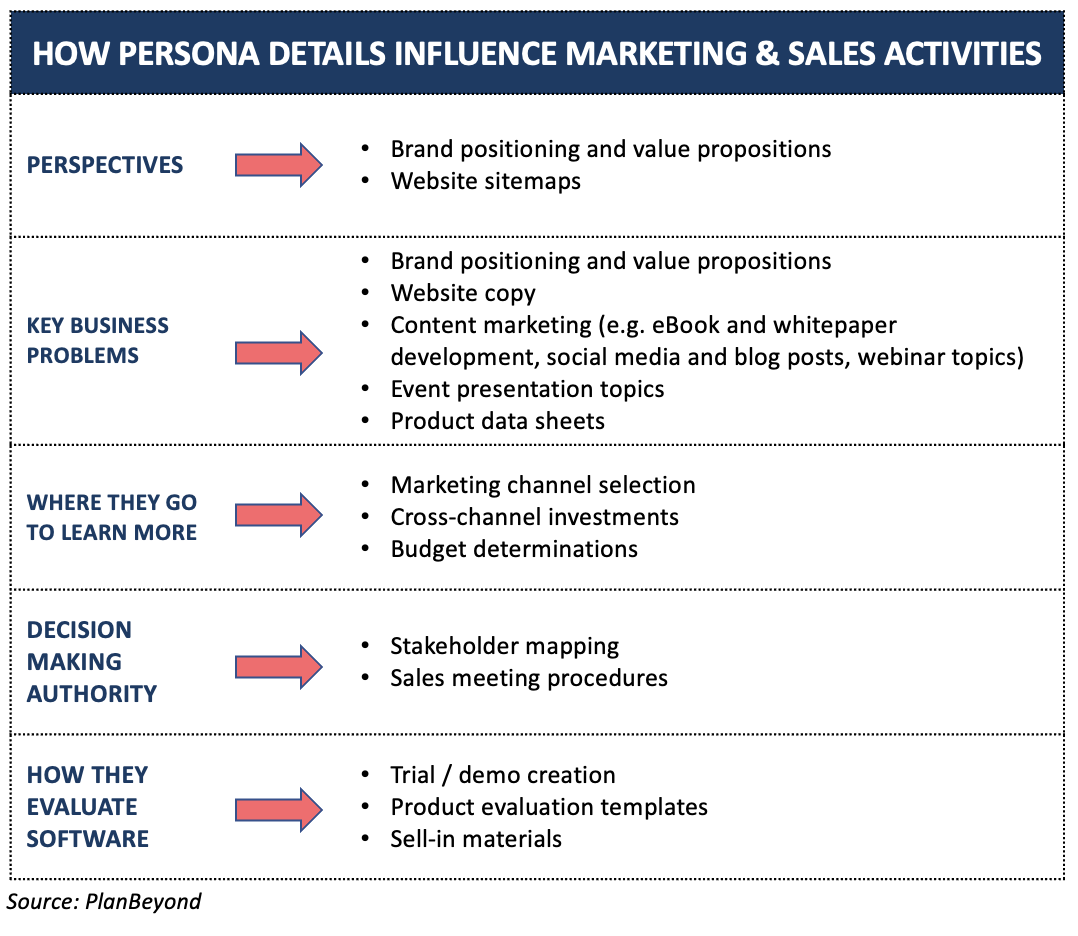Fluff is great when talking about a sweet confectionary marshmallow product. It is not great when talking about market research output.
And yet, that’s a common complaint when it comes to buyer persona research. The output is fluffy and you can’t do anything worthwhile with it. If this is an issue you’ve faced, it’s because the work wasn’t done correctly.
Actionable buyer persona research isn’t just possible. It should be the sole goal when doing this kind of research work. The process starts with a deliberate eye toward what will make the personas actionable, and ends with analysis that yields personas you can effectively run with.
What Is A Buyer Persona
First off, let’s make sure we’re clear about what a buyer persona is, and what it isn’t.
A buyer persona is a representation of your end customer. It highlights their backgrounds, personalities, pain points, category involvement, product usage patterns, and much more. Buyer personas allow product, marketing, and sales professionals to effectively understand who the customers is and, therefore, how to effectively target them.
Personas are far more nuanced than a market segment. While a segment represents a high level grouping or classification, personas go deeper to explore who that specific segment is.
For instance, a business may sell to IT Managers and IT End Users. These are two customers segments. However, when we talk about the background, professionals goals, and perspectives that differentiate these two segments, we’re talking about what makes up their buyer personas.
What Does An Actionable Buyer Persona Look Like
We can’t talk about actionable buyer persona research without first understanding what an actionable buyer persona is. After all, without a vision for our end output we won’t know what’s needed to produce it.
Let’s look at two IT buyer personas to help illustrate this. These represent the personas a software company would likely face when attracting new customer accounts. One is the software end user. The other is the end user’s manager.


By looking at each of these personas, we see two very distinct people. One has more strategic, long term responsibilities. Meanwhile, the other has more tactical, short term responsibilities. As a result, they have different levels of authority, budgetary control, and software evaluation criteria. Further, where they go to learn more about their field varies too.
Translating A Buyer Persona Into Action
Let’s now look at how we translate this persona profile into actionable marketing and sales decisions.
Each persona’s perspectives, business problems, where they learn more, budget authority, and software evaluation all lead to extremely tangible marketing and sales activities.
Marketing Action
For instance, the more we know about each persona’s business problems, the more we can effectively create compelling content marketing. After all, by making sure the eBooks, blog posts, or conference topics address a persona’s challenges, you’ll increase the chance of gaining their attention and drawing them in.
Sales Action
The same holds true for sales processes. If we understand key decision makers and how they evaluate software, we can develop strong sales processes and materials. There’s no more need to scramble on the fly. The sales team will have the materials they need when they need them for smooth sales operations.

How To Produce Actionable Buyer Persona Research
Let’s now circle back to how we tackle research that produces these valuable personas in the first place.
By mapping out what the persona must include, we know what types of information we’ll need to gather. This ensures that any questions are wholly focused on effectively collecting these key marketing and sales inputs. And, at the same time, keep us away from that unnecessary fluff.
Should Buyer Persona Research Be Done Via Surveys Or Interviews
A frequent question is whether surveys or interviews is the right buyer persona research approach.
A good way to answer that is by going back to the question of segments vs personas. If you only have high-level segments, it means you don’t know very much about each one. Using interviews with open-ended questions is likely the way to go. This approach means asking the same series of questions to people tagged as one segment or another. By isolating differences or similarities in their responses, you’ll be able to build out personas.
In contrast, if you have a semblance of what your personas look like, perhaps through past conversations, consider surveys. The results will bring clarity to how the personas vary. Additionally, the larger sample sizes allowed via surveys means you’ll have greater confidence in the results.
Questions to Use In Buyer Persona Research
This leads us to what specific questions we need to use to produce actionable buyer persona research. Each question should tie back to those key persona inputs that make the final persona worthwhile.
For instance, let’s say you want to learn more where you should be spending your marketing advertising funds. In a survey format, this could mean asking the following type of question.
Which of the following events have you attended in the past year? Select as many that apply.
- Azure Cloud Summit
- AWS reInvent
- Microsoft Ignite
- Gartner CIO Summit
- Other (please specify)
- None. I don’t attend conferences / haven’t attended any in past year
If you’re conducting interviews, we’d use the following question instead…
“Have you attended any conferences, events, or trade shows in the past year? If so, tell me which ones and why you selected them.”
Both questions help us gather information about conference and event attendance, and therefore if certain events are worthwhile investments. The questions just vary based on how the research is performed.
Tie Research Questions To Persona Details
In essence, good buyer persona research comes from first understanding exactly why you’re developing the personas in the first place. If the project is driven by a content marketing team, you know your research questions must explore topic areas and content formats. If the project is driven by the brand team, the questions must focus on the persona’s strategic focus areas, common pain points, and business goals.
Take time in advance to map out persona learning objectives and persona use cases. By knowing how you want to use the personas, you’ll know what data you’ll need to gather to effectively build them out.





